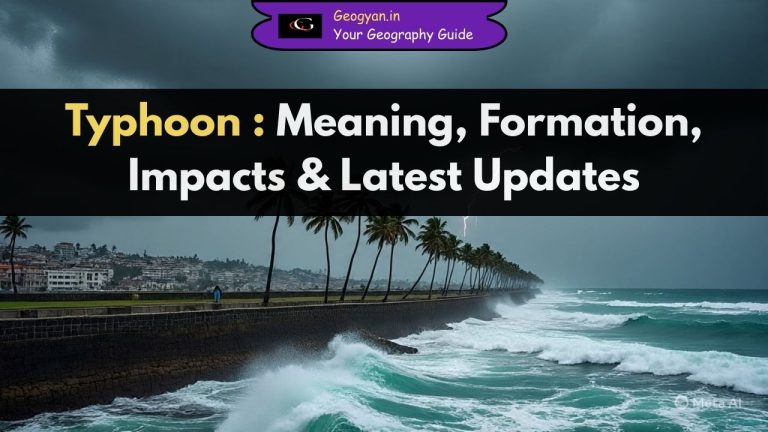Introduction
Before electromagnetic radiation reaches the Earth’s surface, it must pass through the atmosphere. This journey is influenced by various atmospheric particles and gases, which impact the radiation through two key mechanisms: scattering and absorption. Understanding these Interactions of Radiation with the Atmosphere is crucial for remote sensing applications and for comprehending atmospheric phenomena like the blue sky, sunsets, and greenhouse effects.
To put it in perspective, think about how sunglasses reduce glare on a bright day. This is because certain wavelengths of light are scattered and absorbed differently based on the type of lens coating. Similarly, our atmosphere acts as a natural filter for different types of radiation.

Scattering: The Redirection of Radiation
Scattering occurs when particles or gas molecules in the atmosphere cause electromagnetic radiation to deviate from its original path. The degree of scattering depends on:
- The wavelength of radiation
- The size and abundance of particles or gases
- The distance radiation travels through the atmosphere
Types of Scattering
- Rayleigh Scattering:
- Happens when atmospheric particles are smaller than the wavelength of radiation (e.g., dust, nitrogen, and oxygen molecules).
- Shorter wavelengths (like blue light) scatter more than longer wavelengths.
- Responsible for the blue color of the sky and red/orange hues during sunrise and sunset.
- Example: When you look at the sky during the day, it appears blue because blue light is scattered more by the small molecules in the upper atmosphere. During sunrise or sunset, the sun’s rays pass through a thicker layer of the atmosphere, causing more scattering of shorter wavelengths and allowing only red and orange hues to reach our eyes.
- Mie Scattering:
- Occurs when particles are similar in size to the wavelength of radiation (e.g., dust, pollen, smoke, water vapor).
- Affects longer wavelengths than Rayleigh scattering.
- More prominent in overcast conditions and lower atmosphere.
- Example: The hazy appearance of cities with high pollution levels is due to Mie scattering. Smoke and dust particles scatter sunlight in a way that reduces visibility and creates a whitish sky.
- Non Selective Scattering:
- Happens when particles are much larger than the wavelength (e.g., water droplets, large dust particles).
- Scatters all wavelengths equally, making clouds and fog appear white.
- Non Selective scattering gets its name from the fact that all wavelengths are scattered about equally.
- Example: On a foggy morning, the mist appears white because all wavelengths of light are scattered equally by the tiny water droplets suspended in the air.

Absorption: The Energy Trap
Absorption occurs when atmospheric molecules absorb specific wavelengths of electromagnetic radiation, converting it into heat or chemical energy. The major atmospheric absorbers are:
- Ozone (O₃):
- Absorbs harmful ultraviolet (UV) radiation from the sun.
- Protects living organisms from UV-induced damage.
- Example: When we apply sunscreen, we are mimicking the role of the ozone layer by blocking harmful UV rays from reaching our skin.
- Carbon Dioxide (CO₂):
- A greenhouse gas that absorbs and retains heat.
- Contributes to the warming of the atmosphere by trapping infrared radiation.
- Example: On a hot summer day, a car parked in direct sunlight feels much hotter inside than outside. This is because the car’s windows trap heat similarly to how CO₂ traps infrared radiation in the Earth’s atmosphere.
- Water Vapor (H₂O):
- Absorbs infrared and microwave radiation.
- Varies by location (e.g., low in deserts, high in tropical regions).
- Example: Humid days feel hotter than dry days because water vapor traps heat in the atmosphere, making it harder for our bodies to cool down through sweating.

Atmospheric Windows: The Key to Remote Sensing
Since certain gases absorb specific wavelengths, scientists use atmospheric windows—regions of the spectrum where absorption is minimal—to collect data through remote sensing. Key points include:
- The visible spectrum aligns with an atmospheric window, allowing clear optical imaging.
- The thermal infrared window (~10 μm) is ideal for studying Earth’s heat emissions.
- The microwave window (>1 mm) is crucial for satellite-based observations, even in cloudy conditions.
Example: Night-vision cameras use the infrared window to detect heat signatures, allowing us to see objects in complete darkness based on their emitted thermal radiation.
Conclusion
Understanding these Interactions of Radiation with the Atmosphere is complex phenomena. Electromagnetic radiation faces significant challenges as it travels through the atmosphere. Scattering alters the path of radiation, while absorption selectively removes energy at specific wavelengths. Understanding these processes is fundamental for remote sensing, climate studies, and atmospheric science. By leveraging atmospheric windows, scientists can optimize data collection and enhance our understanding of Earth’s environment.
Think about how weather forecasts rely on satellite imagery—without a proper understanding of atmospheric interactions, we wouldn’t be able to predict storms, heatwaves, or even daily temperatures accurately.





























